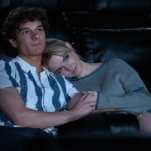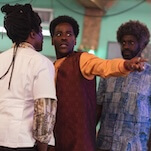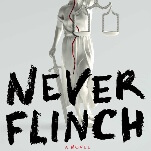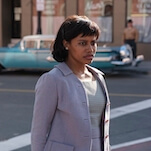Some Body

Some Body, an anti-romantic comedy about a single woman in Los Angeles, at times approaches the flavor and shapelessness of real life, where the stars don't magically align, the right choices aren't always clear, and independence proves just as unsatisfying as a relationship gone stale. The film's co-writer and star, Stephanie Bennett, reportedly based the story on her own experiences, which she presents with a refreshing lack of vanity and spin, almost daring the audience to like her in spite of her ugly tantrums and chronic misbehavior. Add to that the unflattering banality of digital video, and Bennett seems like a sharp retort to the wistful phoniness of Hollywood romantic heroines, who are able to find (and keep) love by simply bumping into it in the third act. Considering the earthy authenticity Bennett brings to the role, why does director Henry Barrial insist on burying her in so many layers of artifice? Perhaps restless with DV's technical limitations, he works overtime to make Some Body more "cinematic," tricking up the footage with jump cuts, sped-up motion, a busy soundtrack, and faux-documentary confessionals. The more Barrial asserts himself, the further away he gets from the material, spoiling the illusion of openness and intimacy that Bennett's supple performance invites. Taking a casual, non-judgmental attitude toward the L.A. party scene, Some Body begins with Bennett, a twentysomething schoolteacher, drinking heavily and flirting with other men in front of longtime live-in boyfriend Jeramy Guillory. When he confronts her about it the next morning, she announces that she's no longer happy with their relationship, and wants to try living on her own for a while. Taking a new apartment in a low-rent Melrose Place, complete with a terrace pool and hardbodies, she experiments with one-night stands and a couple of poor saps who want something more, including a macho creep (Tom Vitorino) who won't take "no" for an answer. Though many of Barrial's more obvious touches don't pay off, he shows real daring in flitting from one encounter to the next without marking time or imposing some kind of pat structure to tie everything together. He accepts that the rhythms of real life are atonal and unpredictable, which is a large part of what makes Bennett's personal journey seem so frightening at times. But the snowballing sequence of events comes to a halt whenever she (or one of her various friends and lovers) speaks directly to the camera, a crude reminder that Some Body is only a movie and there's nothing really at stake for the players. Actual documentaries have the advantage of engaging directly in people's lives; fake ones tend to have precisely the opposite effect.






































